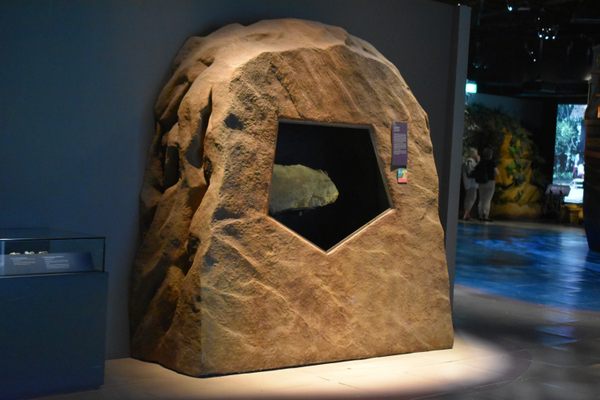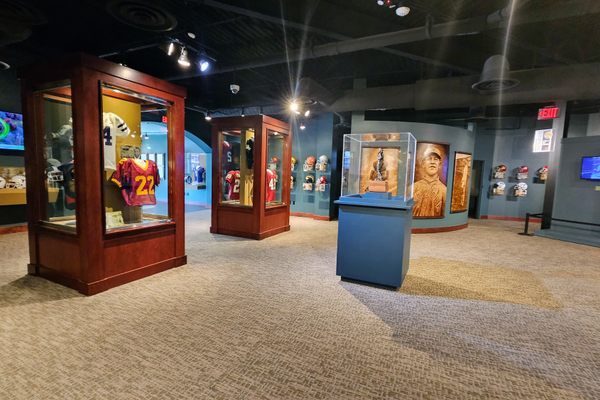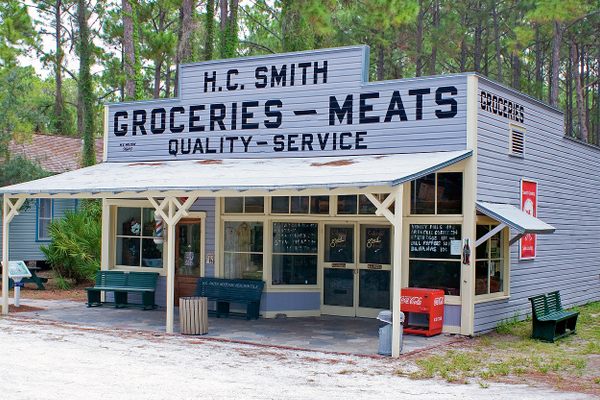AO Edited
Reis Education Canoe
The first handmade canoe built by members of the Passamaquoddy in over a century.
Given Maine’s coastal geography, birch bark canoes were long integral to the Wabanaki people—Indigenous populations who’ve lived in present-day Maine for centuries. Constructed of old-growth birch trees, the handmade vessels traversed Maine’s oceans, rivers, and lakes to transport fish, game, and Wabanaki themselves across the water-pierced landscape. Indeed, the very first description of a canoe in the English language came from British explorers who landed on the Maine coast in 1605.
Yet, with the incursion of these and other colonizers and the felling of much Maine pineland, by the 20th century, the skill of birch bark canoe-building was nearly lost. As one canoe in Portland’s Abbe Museum attests, however, this ancient indigenous craft still lives with us today.
Built in 2013, the Reis Education Canoe was the first birch bark canoe handmade by the Wabanaki in over a century. Under the direction of late master-craftsman and Passamaquoddy member David Bridges (Passamaquoddy being a tribe within the Wabanaki confederation), a group of volunteers sourced, constructed, and launched a 16-foot seaworthy canoe using techniques previously thought to be forgotten. While the vessel is now on permanent display in the Abbe’s Orientation Gallery, Bridges insisted that it should not be considered an artifact—it should be thought of, first and foremost, as simply a canoe. While Bridges inherited traditional hand tools as a child from his great-grandfather—a canoe maker in his younger years—he did not pursue the craft until adulthood. He was then mentored by fellow Mainer Steve Cayard, who had researched traditional Wabanaki canoe-making from old photographs, written accounts, and old canoes found in New England museums. Together, the two honed their skills while holding workshops to revitalize traditional canoe-making within Wabanaki communities throughout the state.
In the spring of 2013, a resurgent interest in canoe-making and a series of fundraisers made the creation of the Reis Education Canoe possible. Passamaquoddy members spent 200 hours harvesting the birch, spruce, cedar, and maple needed for construction, then another 500 hours carefully manipulating the raw materials into shape without the use of modern tools or instruments. Bridges and Cayard oversaw the construction in the Abbe Museum’s courtyard, which was opened to public viewing just for the occasion.
By September 2013, the canoe was finished and launched in nearby Echo Lake. Despite their part in rescuing an ancient craft from the brink of extinction, Cayard and Bridges claimed no recognition. “This isn’t mine—this is the ancestors’ work,” Bridges told one documentarian. “I didn’t invent any of this. They figured it out 3,000 years ago, and it’s perfect.”
















Follow us on Twitter to get the latest on the world's hidden wonders.
Like us on Facebook to get the latest on the world's hidden wonders.
Follow us on Twitter Like us on Facebook